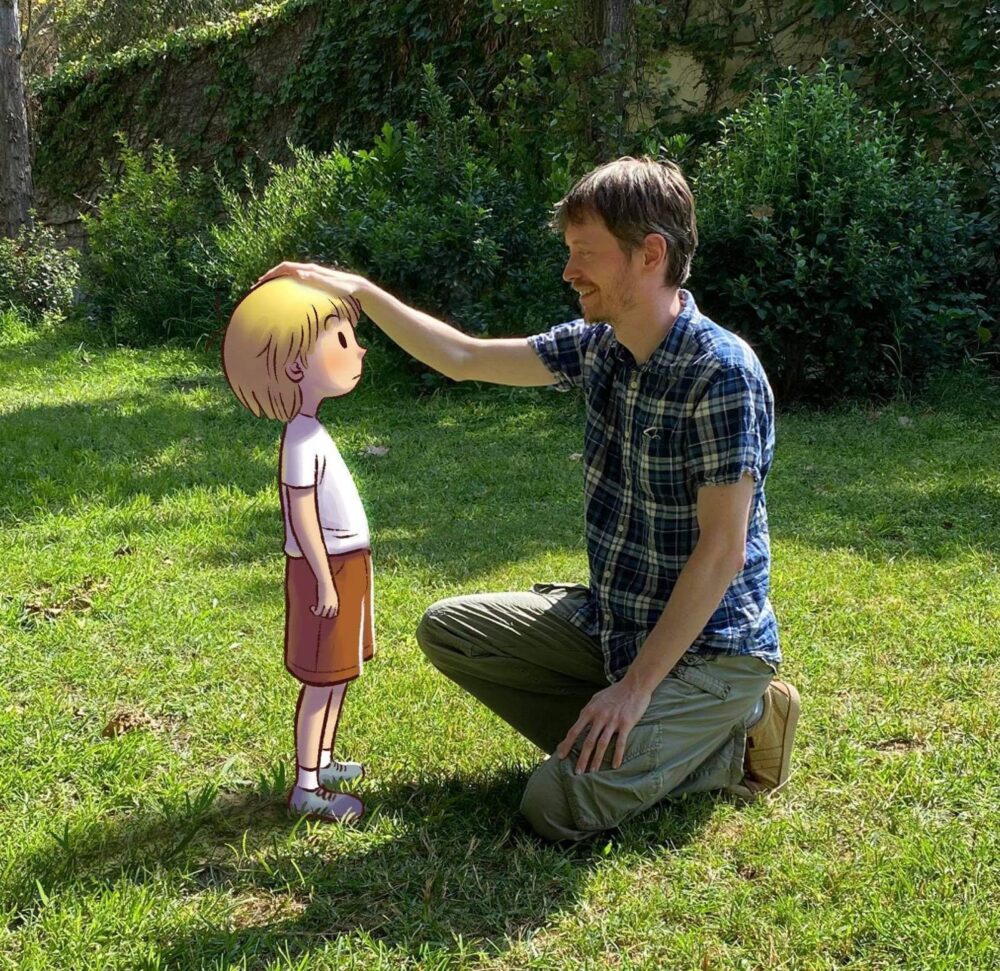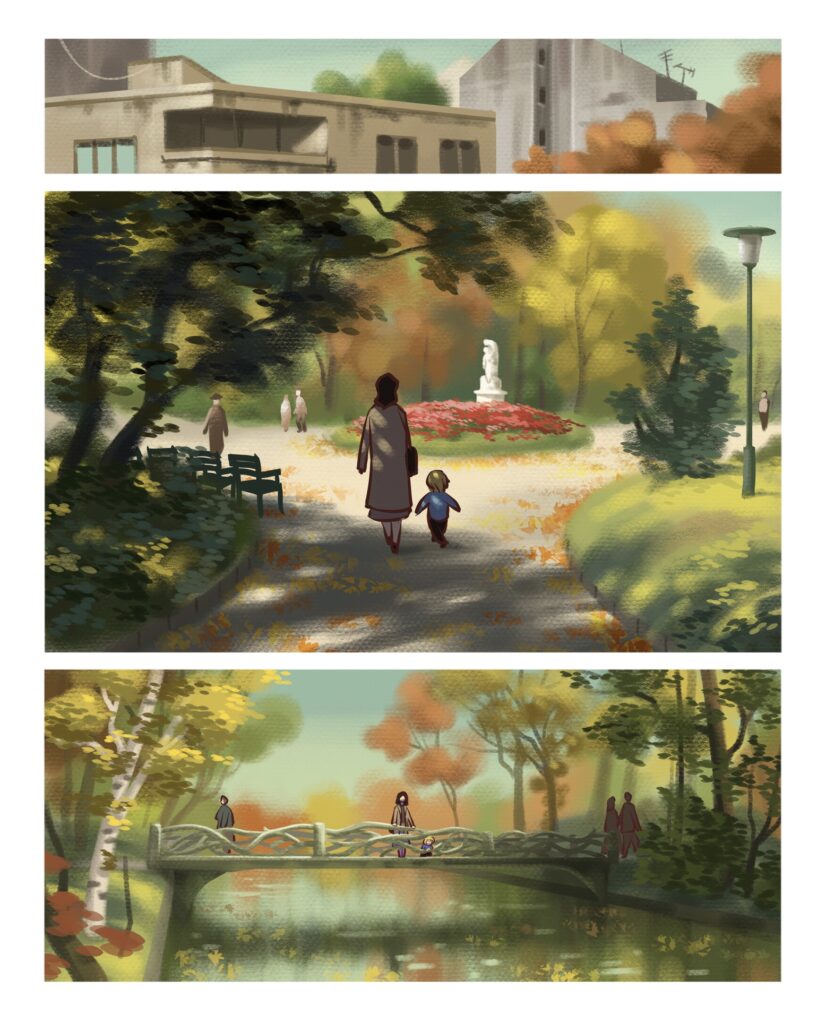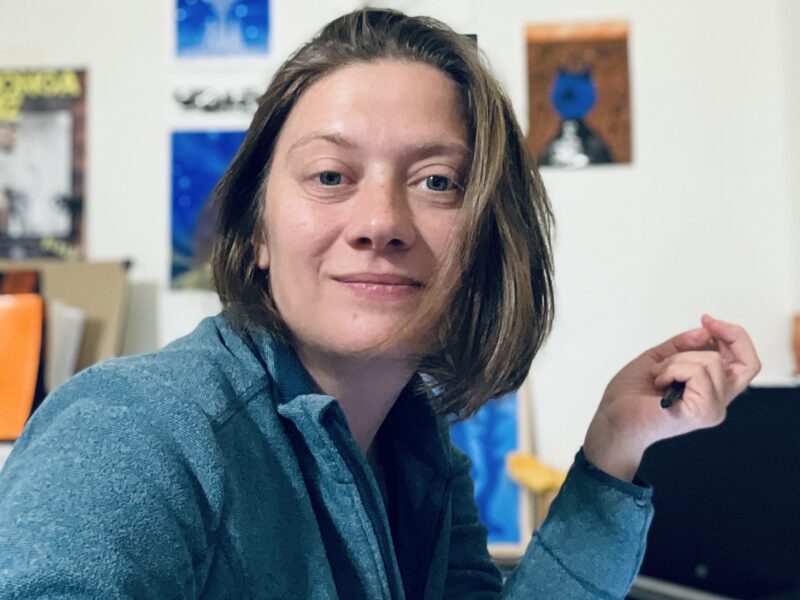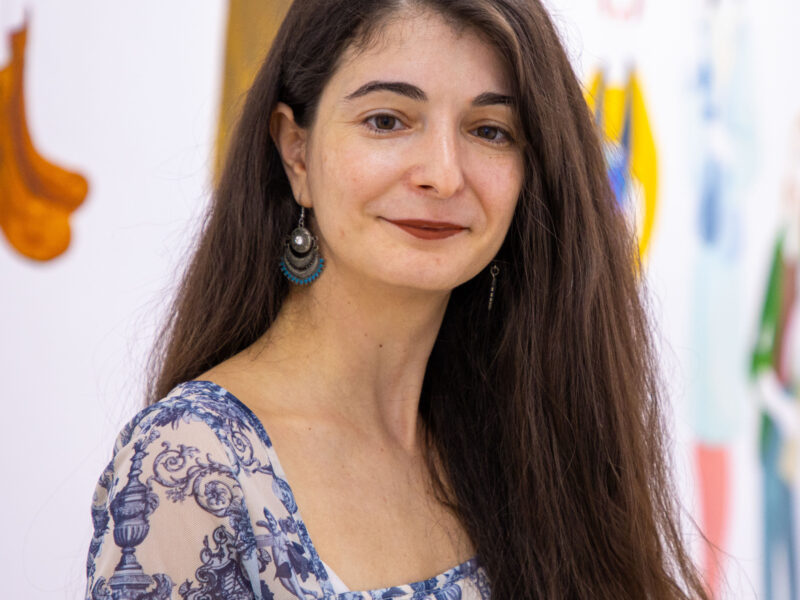Daniel Horia is a comic book artist. His first book, Epoca mea de aur/My Golden Age, was published by Grafic, part of the Art Editorial Group, in 2021. He graduated from art school, and then from the University of Architecture and Urbanism in Bucharest. He lived in France for three years, and since 2014 he has been living and drawing in Barcelona.
How long did your golden age last? Or maybe it is still going on?
My golden age unofficially ended in a vague manner when I moved out of my childhood apartment. This happened in `94 and it coincided with the end of my childhood. For me, childhood was the golden age.
And did you move into another apartment?
Yes, I moved into another apartment. We made an exchange with my paternal grandparents, because their apartment was bigger. I had grown up, and we had only two rooms in the apartment of my childhood, so it was difficult.
Why a graphic autobiographical novel? Does this have anything to do with the fact that you no longer live in Romania?
It surely does, because a feeling of nostalgia associated with the country came over me, the nostalgia associated with Bucharest, where I spent my childhood and lived my whole life. My whole life until the age of 31. So it definitely made me return to the past, and to my roots.
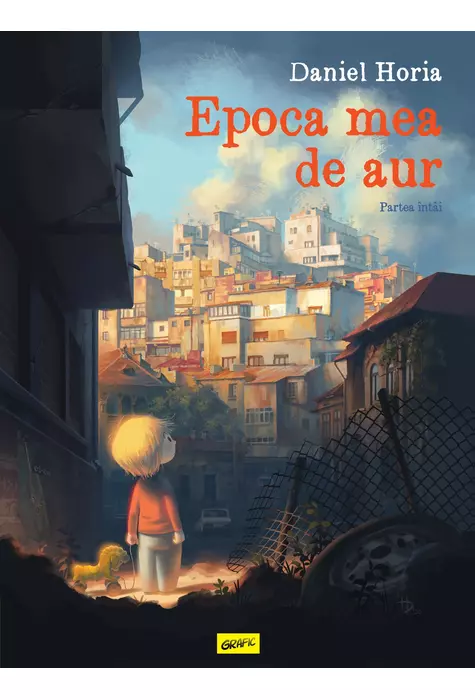
Has there been any “madeleine” which made you remember all the things you wrote and drew about?
There have probably been many factors, but the defining ones include the deaths of my grandmothers. They happened in the same year. My grandfathers had already died a while back. But I cared for my grandmothers more than I cared for my grandfathers. When it happened, I had been living abroad for a few years, and this, combined with the fact that I missed my country, probably led to the graphic novel idea.
You said at one point that it took you 3 years to finish the book – written in English at first and then translated. What took longer? Polishing the idea or actually working on it?
Hard to say. As I said, the idea came to me after my grandmothers died. Which happened around 2014. I started thinking that I would like to draw something regarding my childhood and, as I was and still am passionate about comic books (and I had drawn such things in the past), I thought that the best way to express my ideas and my feelings would be in the form of a graphic novel.
How long did it actually take you to write this graphic novel?
It took me three years. But it actually started when I got an iPad. It’s easier than drawing on a computer.
What came first? The text or the illustrations? Or both at the same time?
Both at the same time. Normally, this is not the recommended method. The orthodox method probably includes a script, which you should then separate into images and into pages. I somehow did everything the other way around. It’s a less orthodox method, in which I draw gradually, page by page. I don’t do sketches and I don’t plan ahead. If I do plan things, I plan them in my head, not on paper. And when I start drawing, I draw every frame or every page, until I reach the end.
A few months ago, I did an interview with Sorina Vazelina and she also told me that she does not follow all of these “orthodox” steps, and I wonder whether there are any artists who do.
Absolutely, there are many artists who follow the steps. Actually, when you work with a scriptwriter, you have to follow the steps, whether you like it or not. And this changes everything. In my case, and probably in her case, too, we can do what we want, because we do not work with scriptwriters, we have more freedom.
Did you have any particular profile of the ideal reader in your head when you came up with the graphic novel? Who is it for?
I began by drawing for myself, to be honest, trying not to think too much about who the book is for, or to whom I’d dedicate it. And this gave me more freedom. After that, I gradually started thinking about a potential public. Initially, I didn’t even think that I would publish it, it was more for my own soul. To get it all off my chest, to put my memories down on paper, it was all because I missed my family and all that.
Did anything change when you decided to publish it? Did you add anything special for a certain part of your audience, or did you modify anything in order for it to appeal to anyone in particular?
In a way, yes. In the first part of the comic book, the memories are drawn in a more scattered manner, they are more specific. After that I started thinking about a more general story, in order to tie the two together, and to create a bit of suspense. To make everything a bit more compelling for the eventual readers.
I liked grandmother Catrinel the most, which, you mentioned at one point, was not her real name. Do you have any favourite character from those you recreated in the book?
This is a tough question. Even now, I can’t really say which character is my favourite. When I was a child, grandmother Catrinel was definitely my favourite. That’s for sure. And that was what I wanted to convey in the book. But now, looking back, I’d say that my favourite grandmother is Olga, my paternal grandmother. My point of view changed, somehow. But I tried to convey more of what I was thinking back then, and less of what I think now.
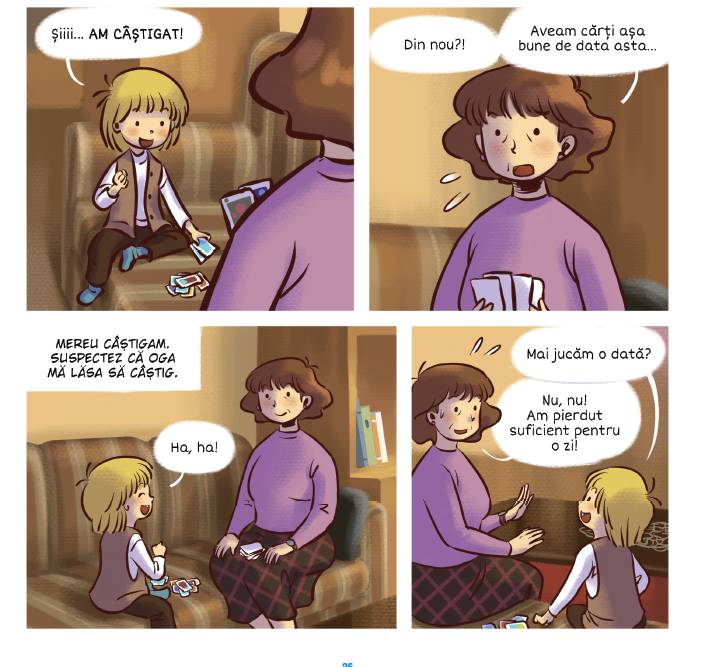
And was there any character which made you chuckle enthusiastically when you created it?
Drawing all of them brought me joy. I really couldn’t say that I liked one more than the other. Maybe Olga, the paternal grandmother, because she was the easiest to draw. She had well-defined characteristics and they were easy to convey in a simple drawing. I had issues with Catrinel. For instance, Catrinel was a very beautiful woman, and this thing is always difficult to convey in a caricature, or in a comic book. It’s much easier to draw someone who has obvious characteristics. If they are fat, for example. It's more difficult to draw someone who has classical, standard traits. Beautiful, but standard. With Catrinel it was more difficult because she was a beautiful woman: she didn’t have a big nose, or small eyes, or a big mouth, with protruding teeth, or other things like that.
Spoiler-alert: did that nasty doctor really exist?
He existed, but I also added certain things. Obviously, I can’t remember everything from back then, I know things because I heard stories, and thanks to my vague memories. But he did exist, he was a well-known doctor at that time. And yes, there was something wrong with my surgery. I researched a little and I heard horror stories from other people. I changed his name a bit, you know how it is...
How did you come to publish at Grafic/ART?
I wanted to publish at ART from the very beginning, because I knew that it was one of the biggest publishing houses, if not the biggest publishing house which releases graphic novels in Romania. It had been my first option. Then, I talked to a friend who put me in touch with a guy who works at ART and who is very nice and tries to support Romanian artists.
Are you talking about Matei [Sâmihăian]?
Exactly. I sent him the presentation of the graphic novel and he sent it to the director to see whether he approved it or not. That was about it.
Was this approval process fast?
I don’t really know what the standard speed is. But it took about two-three months.
That’s very fast. All the Romanian writers will envy you.
It seemed like an eternity to me, those two-three months.
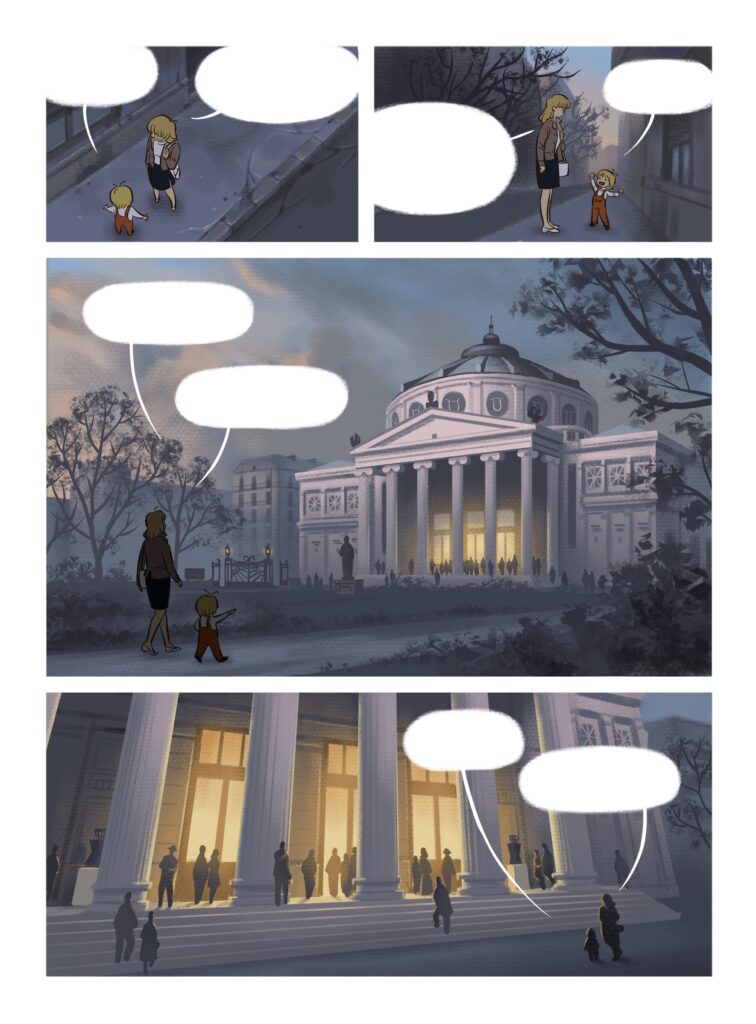
Did you get involved into the editing process of the book? I am thinking about the choice regarding the type of paper, the type of cover etc.
The type of paper, no. Given that I was in Spain at that time, I didn’t even touch the book until I came here on holiday. That was when I saw it for the first time. The only thing I chose was the type of cover, because initially I wanted to make it a softcover. But the people from the publishing house said “look, hardcoverwould work better, because we have had both softcover, and hardcover nd we saw that softcovers are worse, meaning that they are less sturdy and they could come apart. And it would be better if we published it as a hardcover.” Okay then, hardcover it is, no problem. This was the case when it came to the type of paper. But when it came to the graphics, I was involved in absolutely everything. Okay then, hardcover it is, no problem. This was the case when it came to the type of paper. But when it came to the graphics, I was involved in absolutely everything.
So the book you gave them had already been paginated.
From A to Z. They only added the page numbers, because it would have been a lot of work for me, to add the page numbers for 200 pages manually. They have a programme which does that automatically. Oh, they also worked on the cover; I gave them a variant and they changed a few small things, such as the title colour, which was a dark blue in my version, and they made it orange. And other things like that. Other small changes.
The book was edited by Ioana Vîlcu. How did the collaboration go? Did you negotiate phrases, words? Did you give in with a lot of difficulty?
The collaboration with her was really, really ok. There were some moments when we exchanged ideas and opinions, back and forth. I explained my point of view to her, she explained her point of view to me. In certain cases, I understood her point of view and I accepted it without any problems. In other cases, she did this with me. We worked together. For instance: there is a frame in the book in which my mother talks to me as a baby and she says “look, the stork brought you”. And Ioana suggested that we should modify this, so as not to make the children who read this think that that is where babies came from. So as not to propagate this myth, I mean. And I told her that I agreed with her, that parents nowadays should not tell that to their children, but when I was young, that was what all the children were told. It was the standard method. And I said “look, this detail is about the atmosphere of those times, about the people’s way of thinking back then, and I think it’s important to keep it”. And Ioana said ok, no problem.
How did your family react when they saw the book and the characters? I will not ask you about how much of it is fiction and how much of it is real, but there are some pretty intimate and painful details, which could be difficult to digest for those involved in it.
Out of all the characters in the book, the only people who are still alive are my mother, my father and my aunt. The only one who read the book from start to finish is my mother. My aunt read about half of it. My mother said that she would send her the book. The other characters – the grandparents – are no longer alive.
My mother was very ok with it. She hesitated a few times. At one point we had a talk and I told her what I wanted to write about, and that included the abortion, and she was vehemently against it. In the end, I did what I wanted. And when I gave it to her to read it, she told me that she had nothing negative to say about it, that what I had written was more than ok.
What strength of character!
On her part, or on my part?
On her part. Your mother is cool
She is indeed.
Was she ok with the fact that she would see her family photographs in all the bookshops?
My mother cried happy tears. She was very emotional.
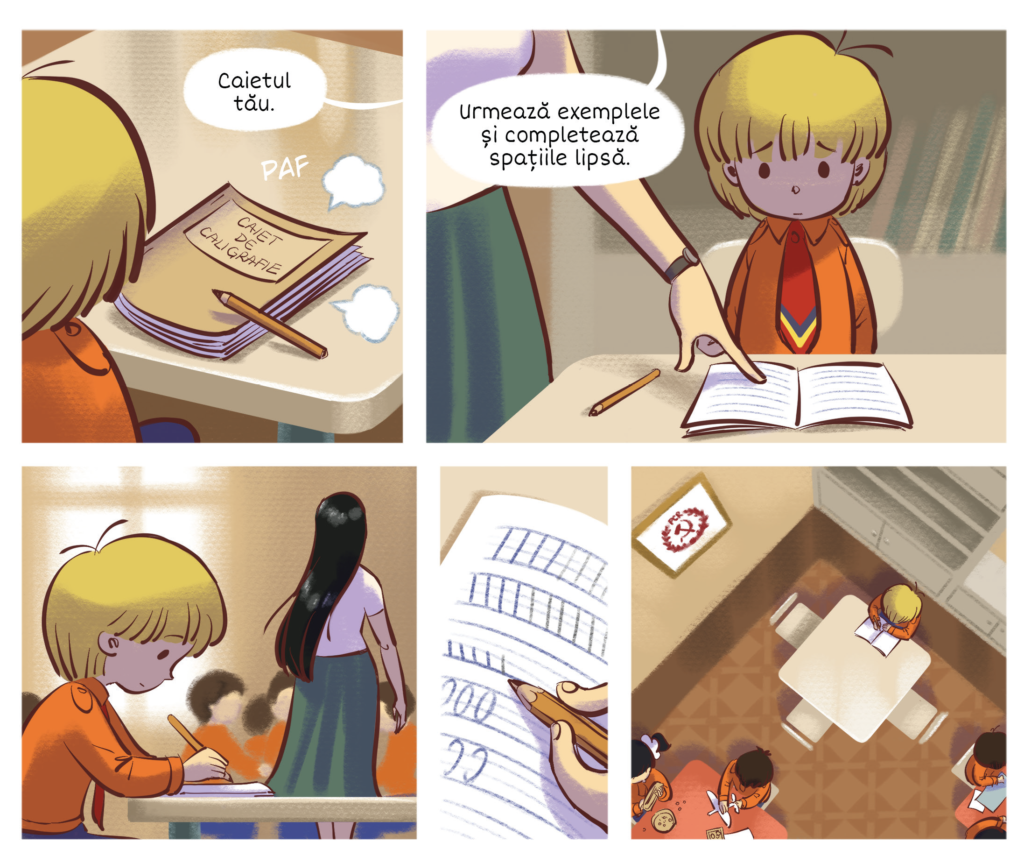
What role does Chernobyl play in this whole story? At first sight, it seemed like a character which did not fit there, but then I saw it as a hook for a future book. Why did you include it?
You’re the first one to tell me this, that it somehow did not fit there... Because until now, all the people I talked to about the part with Chernobyl told me that they found the parallel between Chernobyl and what was happening in my life very good. I mean the Chernobyl explosion and me, on my deathbed. When I wrote this, I thought a lot about whether to include the Chernobyl parallel or not. And, until now, based on people’s reactions, I was glad that I included it, but now that you told me what you think, I’m starting to have some doubts. This will have repercussions in the following books, but not in an extremely direct and obvious manner. As I wrote in the first volume, at the end, I became very sensitive after that episode. And my health became worse. I was always sick or cold. I had to stay a lot in bed or things like that. I don’t want to focus on this in the following books, but it is going to make an appearance.
Will we also read the story of Dani’s adolescence?
Like I said, my golden age was childhood. So I’ll want to concentrate on childhood in the second volume, too. Probably also in the third volume, if there’s going to be a third volume. After which we’ll see. The first volume took me four years in total. If the second one will take me just as long, and it surely will, who knows when I’m going to finish them.
Those who have read the first volume are already asking me about the second one. Perhaps I should emphasize the fact that the first one took me four years even more.
Maybe you’ll be more motivated by the reactions you’ll receive.
I was motivated before, too. That’s not the problem. The problem is that I have a full time job, which has nothing to do with my graphic novel.
Are you a graphic novel or comic book reader?
I am an absolute fan of European comic books. Not American comics.
Manga?
Until the age of 30 or so I was a die-hard manga fan. But then I wasn’t anymore. It was a childhood and adolescence phase.
And how did you read them?
After the Revolution I went abroad, in France. I discovered manga and everything else there. After that I made a few French friends and they sent me comic books. They even got me subscriptions. A lady got me a subscription to a magazine. After that, in 2000, when I got a computer, it obviously became easier to read them on the internet. I had friends who were passionate about it, and we even exchanged comics.
And among the Europeans, do you have any favourite titles/authors?
Those I like the most are actually a couple. He is a cartoonist and she is a scriptwriter. They’re called Teresa Radice and Stefano Turconi. They create absolutely wonderful stories. Very emotional, they put their heart into those stories. They are very human and very warm. And extremely well-drawn. After them, among the French artists, there are tons of them I like; my favourites are Bastien Vivès and Matthieu Bonhomme. They draw incredibly well and they manage to convey a lot of emotion through their drawings. And another Italian would be Luigi Critone, who also has exceptional stories. My first comic book album was one created by Hergé.
[The interview was audio recorded and transcribed.] [Translated into English by Irina Adelina Găinușă.] Photos: Daniel Horia & Epoca mea de aur/My Golden Age

